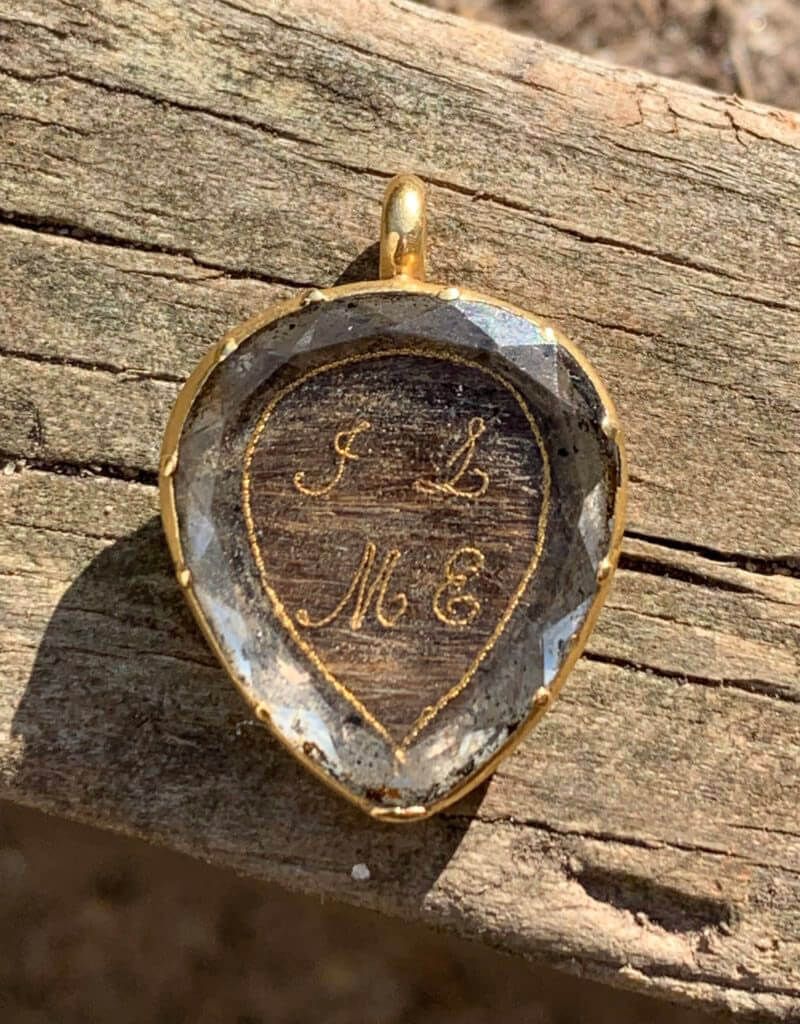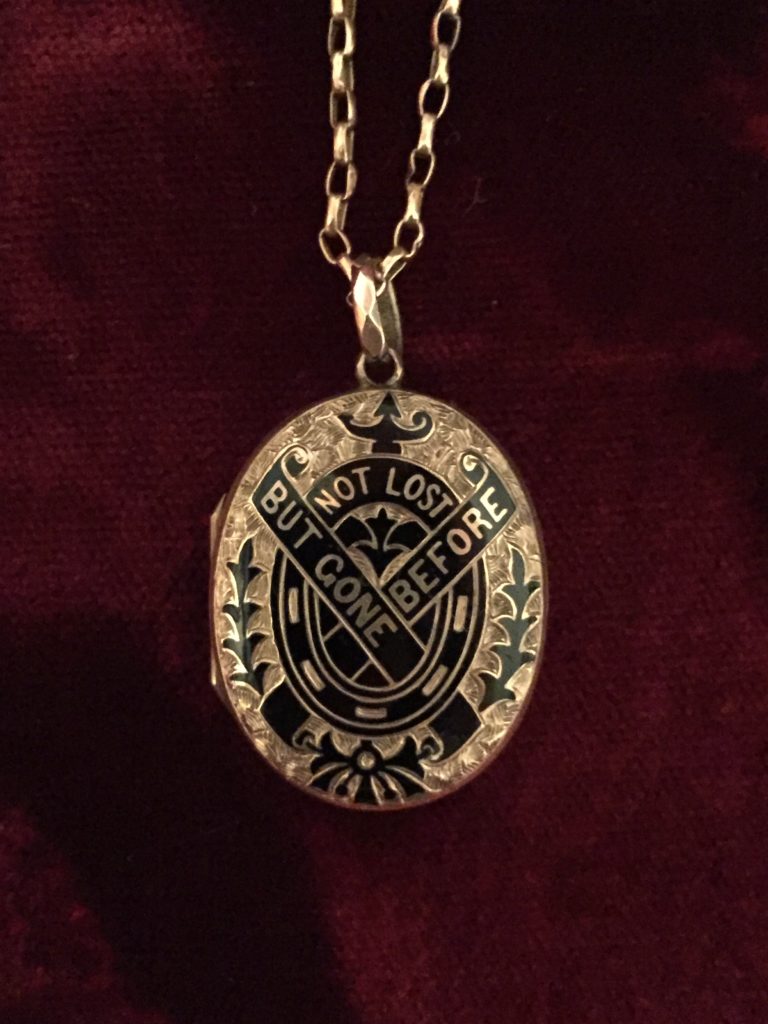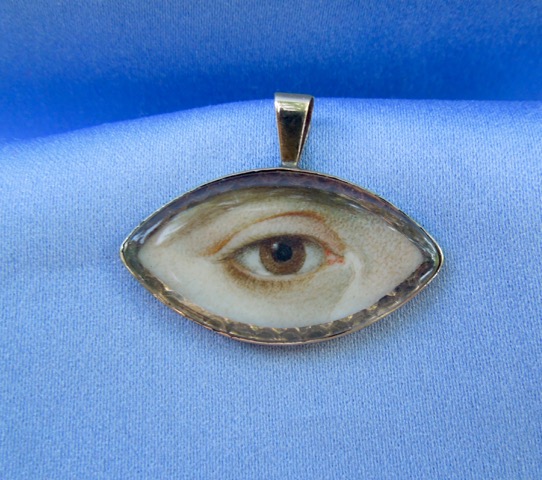Post-Victorian Lockets and Pendants
The decline of the mourning industry was not exclusively ‘mourning’ related, but an actual change in fashion and social taste. How to present sentimentality and love in a public forum through a jewel was very different in the post 1901 environment than it had been since 1861. Two generations had passed under a very static monarchy, which originally had been the cultural impetus for fashion and art. Society would look to the monarchy for various elements to adapt, the most noteworthy being George IV, but Queen Victoria had established the ‘ideal’ family unit under a Christian value system and then fallen into perpetual mourning. Despite the underpinning realities which may contradict this, it was then, and still remains, a value system that Western cultures still use today. Everything from the establishment of wedding ritual to Christmas rituals and their surrounding affectations are built from the 1840s, yet there was a rebellion in society that needed to create its own style and movement to break apart from what was considered a rigid perception of mainstream fashion. This change came about in the 1890s.
Throughout the post 1880s decline, in the 1890s, women would wear their veils at the back of the head only, showing hair beneath bonnets at the front for first stage mourning. This defiance was quite bold and marked a large turning point for mourning structure. While this perception is very affecting to mourning, the sentimental industry and its production of jewels as tokens of love were changing rapidly. There were art movements, such as the Arts and Crafts movement, which built upon the ‘natural’ elements of beauty and design to be interpreted in architecture and industrial design. This was a counter-reaction to the industry that had dominated 19th century life, by moving back to organic styles. This is much the same as the Rococo movement in the early 18th century, which reacted against the dominant Baroque styles with organic flourishes. This, in conjunction with the Enlightenment, led to new perceptions of the self in the Neoclassical movement and in the late 19th century, we see the same revolution in cultural style.
Queen Victoria’s death in 1901 created the catalyst which led to the new generations establishing their own styles as the new social revolution. From an inward-out perspective, the English looked to France and America as being the leaders of influence in style and these adaptations had a massive impact on jewels of the time.
But that is not to say that jewels of the 19th century ceased to have their impact. The gypsy-set jewels of the late 19th century were still popular, as well as many of the existing styles which could be purchased in catalogues. Hairwork and mourning jewels suffered, while a new Romantic movement led to miniature portraits, love tokens (heart shapes, particularly) and narrow brooches with simple and direct symbols set with gems. The difference here is that the Edwardian jewels were built around the artist and designer. Jewels that were a step beyond the catalogue-bought styles focused upon new artists, such as René Lalique, and the rise of competing art movements to represent these styles in jewels.
Even for World War I, with an estimated thirty-seven million casualties, a mourning industry to rekindle the previous generation, did not happen. Different sentimental elements, such as the giving of a watch chain to wear as a necklace, became sentimental keepsakes, rather than a proper dedication in a ring.
Photography is the final key factor in the depiction of the self. Its impact on jewellery design cannot be understated, as the capturing of an image of a loved one overcame the capturing of a piece of that loved one in hairwork. Much of this change is why the perception of having the hair of a loved one in a jewel is considered morbid today. Why have hair when a photograph was nearly instantaneous and within the budget of a working class individual? Better technologies led to photographs having smaller sizes and that led to smaller jewels being constructed around this form factor. In this jewel, we see the elements of the heart and the photography combined with a cameo of the female denoting a loving piece for its time.








